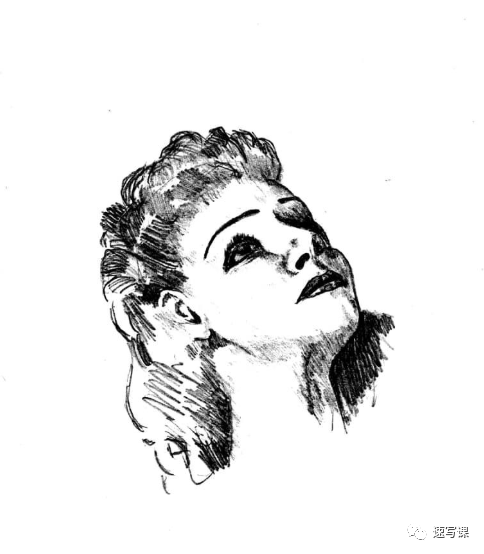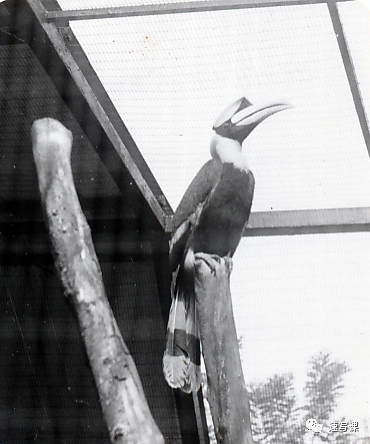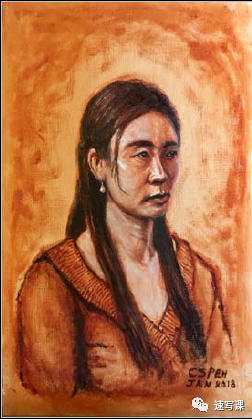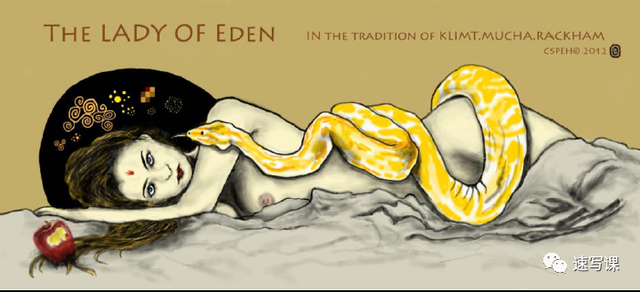提高公民藝術素養 速 寫 中 國 全國最大的速寫社群
編按:我們社群有著許多藝術家、藝術愛好者,雖然他們不如梵高、莫奈出名,但我們認爲,他們一樣對世界充滿著價值。只要啓發人們對世間美好的感歎,對世界、社會有著積極的貢獻,也有不可忽視的價值。我們在此推出【微小的曆史】,展現時代中微小個體對藝術的追求與執著,他們曆經歲月的藝術作品,當我們閱覽不同藝術家、藝術愛好者的作品外,也可以從畫筆下感受時代的流淌與變遷。此欄目歡迎畫友們投稿,讓我們一窺不同的藝術故事與曆史。
Wechat ID:南海畫陀
Facebook ID:Peh’d Artist
白振新 , 新加坡人,多元藝術家,喜愛速寫、繪畫、雕塑、攝影和寫作。其中繪畫包括鉛筆畫、炭筆畫、 鋼筆畫、水墨畫、油畫和數碼藝術。他只上一些短期課程,大半都是自修自學。他曾經是一名電腦軟件工程專業人士,跨國公司的高級技術管理,最後從商進入創業投資。至今是半退休藝術人士。
我兒時的藝術回憶
魚尾獅公園(Merlion Park)是新加坡面積最小的公園,魚尾獅(Merlion)是虛構的魚身獅頭的動物
1964年由當時的Van Kleef水族館館長Fraser Brunner設計
我整理我的書房和數字化我自己的過去的照片和童年生活檔案時,我偶然發現了這本我從小保存的第一本速寫本。這就像是從小學高年級到中學2年級(11-14歲)之間的某個時刻。那時我還沒有那麽認真,因此,只有這幾頁,大部分的頁面仍然沒有動過。所以,在這裏與大家分享,我童年時候的作品和一張照片,我在海邊(Esplanade)進行城市速寫,魚尾獅首次安裝在海濱。有些手繪畫在廢紙上,打發無聊的時間。顯然,在我的數字掃描儀掃描後,看起來很複古,很有曆史感的泛黃,我很喜歡。
可以看出,我對藝術的接觸和啓蒙,主要受我父親書店出售的漫畫和一些藝術書籍。這些書主要是從香港和中國進口的。所以,每當我遇到一些我喜歡的漂亮的圖象/插圖時,我都會從中學習或臨摹,無論是照片還是插圖。
追溯到更早的時候,我記得我在小學時就開始在廉價的速寫本作畫。這類題材要麽是一些在一戰、二戰戰場上作戰的士兵,要麽是跟隨我的兄弟,從一些中國武俠小說中,自我想象創作的漫畫。
在學校裏,我受到了一個很有天賦的同學的啓發,他可以從想象中,輕易地畫出各種姿勢的士兵,而我只能受限于二維空間,畫的很平面,就像埃及藝術那些肖像。不幸的是,這些書要麽被扔掉,要麽被白蟻吃掉。
後來,我對自己藝術能力的信心增強了,因爲我在小學六年級的時候,贏得了一場藝術競賽,初二時候獲得了同齡人的最大的藝術獎。所以,不知怎的,你知道藝術在你的血液裏。很可惜,當時沒有保存任何影像記錄,我只記得前者是在一個Thiapusam展覽,後者作品是一個海報藝術。我的小學校刊也被白蟻吃掉了。
當我進入中學三年級(15歲)時,我停止了藝術繪畫和繪畫,盡管我還在生物課上做“藝術”,畫植物、動物和人體解剖學,還會收集漂亮的藝術圖片和郵票。此後,我加入了學校攝影俱樂部,從那時起攝影成爲我的藝術關注焦點,我將在下一篇文章中進一步介紹。
My Childhood Art
While decluttering my study room and digitizing my own past photos and childhood life archive, I came across my this first sketchbook I kept since my childhood.
This was like sometime between late primary to Secondary 2 (age 11-14). I wasn’t that serious and therefore, there is only these few pages, with most of the book still untouched. So, here to share with you my past child works and a photo where I do my “Urban Sketching” at the Esplanade when the Merlion was first installed at our waterfront. Apparently, it is so jaded and yellowed that after scanning with my digital scanner, it do give a touch of vintage look that I like. Some were even just drawn on Foolscrap paper to pass boring time…
As can be seen, my exposure to art was mainly influenced by those comic and some art books sold in my father’s bookshop, mainly imported from Hong Kong and China. So, whenever, I came across some nice drawings/pictures I like, I would learn to copy and draw from it, be it a photo print or an illustration art.
Tracing back even earlier, I can remember I started drawing on cheap jotter book in my primary school days. The genre would be either be some soldiers fighting on battlefield of WWI and WWII or follow my sibling self-imagined comic drawing on some Chinese fighting novel (武俠小說)。In school I was very much inspired by a talented classmate who can simply draw soldiers in various poses in perspective out of imagination whilst I can only draw in 2D like that Egyptian art. Unfortunately, all those books were either thrown away or eaten up by termites.
A boost of confidence in my art capability was winning a art competition in my Primary 6 and achieving the top art prize in my cohort in Secondary Two. So, somehow you know art is in your blood. No images were preserved back then and I can only remember the former was on a Thiapusam processing parade and the latter was a poster art. My primary school magazine has also been eaten by termites.
As I progress to Secondary Three (Age 15), I stopped doing artistic drawing and painting, even though I still do “art” in my biology lessons drawing plants, animal and human anatomy and would collect nice pictures and stamps of art. Thereafter, I joined the School Photographic Club and Photography becomes my arts focus since then, details of which I will post further on this in my next post.
我的青年藝術-攝影
15歲時,我開始把攝影作爲下一個愛好。在我的中學三年級,我加入了學校攝影協會作爲我課外活動的一部分。我使用的第一個相機是Yashica雙眼連軸相機,它是從針孔相機的概念發展而來的。它配有一個55毫米的大尺寸膠卷。我很幸運能從我的哥哥姐姐那裏借到這個,他們已經開始工作了,還買了一個相機給他們拍約會照。
還有一種類型叫做35mm測距儀,它使用視差方法來聚焦。嚴肅和專業的攝影師會選擇單反相機(SLR)與可互換鏡頭。當我在軍隊服役後,我有了固定收入,才買了第一個單反。
我高中生涯在Victoria School,這是我爲攝影社團設計的領章。作爲新加坡第一所有領章的學校,這是很酷很時尚的感覺… 那時候,只有大專院校有校徽領章,更正一下,唯二,華中和大專院校才有領章。
A collar badge I designed for my photographic society in my high school at Victoria School. It was a cool fashionable sensation as the first school in Singapore to have collar pins… Back then, only the junior colleges pin their school badges on the collar.. and there were only two, Hwa Chong n National Junior College.
當時,唯一使用的媒體是全都是膠卷,沒有人夢想過今日的數字化。膠卷影像一般分爲兩部分,一部分是拍照,一部分是學習使用相機,另一部分是後期處理,在暗室裏沖洗膠卷和照片。我們學習了攝影的基本原理,如膠片感光速度(DIN/ISO)、光圈和速度的設置、聚焦、平移、長曝光夜間攝影、濾光片的使用、變焦和基本鏡頭等,所有這些都是機械和手動的,我們必須學會判斷環境光強度,以確定正確的相機設置使用。專業人士是唯一一個使用非常昂貴的測光和變焦鏡頭的人。
對于後期處理,我們在學校提供的暗室裏學習並制作了自己的膠片沖洗和照片。電影沖洗成底片後,我們用投影儀放大,沖洗成各種尺寸的照片。然後,相紙經過不同階段的濕化學品處理,然後晾幹。所有這些都是在暗室裏用低暗的紅光做的,因爲這些光線非常敏感。這是一個很長的過程,通常只花幾個小時來處理少數幾張照片,但這真的很有趣,尤其是等待看到的圖片只出現在照片上。那個時候,當你按下相機快門後,必須等待數小時或數天後才能看到影像。
老式的暗室方法也有各種技巧,以産生非常藝術的圖像輸出,像高對比度或輪廓邊緣圖像,就像插圖藝術的風格。攝影學會的活動包括到公共公園(如聖淘沙的鳥園和動物園)進行攝影,並在暗室裏沖洗膠卷/照片。偶爾,我們會參加攝影展和參觀攝影展。俱樂部成員還擔任學校活動和雜志的官方攝影師,這些日子一直持續到高中。直到今天,我斷斷續續接觸數字媒體和藝術職業生涯的後期,在職業生涯中,3D立體視頻、電影攝影和電影制作方面都有短暫時間的涉獵。
當我去加拿大的大學攻讀計算機科學專業時,圖像處理(就像今天的照片軟件一樣)是我的最愛之一,開發算法軟件處理今天你所知道的核磁共振成像、Photoshop等圖像。畢業後,我差點就進入柯達在這領域工作,但上世紀80年代曾是《財富》500強前10名的柯達發現,放棄利潤豐厚的電影業務太痛苦,而且適應速度太慢。它很快就像恐龍一樣在快速變化的科技世界中遭受了滅絕的命運。
快速前進到今天的數碼攝影世界,甚至相機和Photoshop都幾乎是過時的,因爲從拍照、處理和編輯的整個過程都可以用一個小手機完成。然而,攝影的共同基礎,如構圖藝術和發展審美眼光,仍然存在,而且也與繪畫和任何視覺藝術形式有關。
My Youth Arts – Photography
At the age of 15, I started to pick up Photography as my next hobby. At my secondary 3, I joined the school Photography Society as part of my Extra-curricular activities.
The first camera I used was a Yashica twin-lenses camera developed from the concept of the pin-hole camera. It comes with a 55mm large size film. I was fortunate to have this borrowed from my senior siblings who had already started working and bought a camera for their dating photos.
There is another type called the 35mm range-finder which use the parallax method to focus. The serious and professional photographers would opt for a Single-lense reflex (SLR) camera with interchangeable lenses which I only get to buy one after making my stipend income from my National Services in the army.
Back then, the only medium used was all film, no one ever dream of digital. There are generally two parts, the photo-taking part where one learnt to use the camera and the post-processing part where you developed the film and photographs in the darkroom.
We learnt the fundamentals of photography like film Sensitivity Speed (DIN/ISO), manipulating the settings of aperture and speed, focusing, panning, long-exposure night photography, use of filters, zoom and prime lenses etc. Back then, all are mechanical and manual and we have to learn to judge the environmental light intensity to determine the right camera settings to use. The professionals were the only one that will use light metering and zoom lenses which were very expensive.
For post-processing, we learnt and did our own film developing and photographs using chemicals in darkroom provided in the school. After the films were developed into negatives, we used an optical projector to enlarge and developed them into photographs of various sizes. The photographic paper then processes through various stages of wet chemicals and then left to dry. All these had to been done in the darkroom with a low dimmed red light as these are very light sensitive. It can be a long process usually spending hours just to process the few photographs, but it was really fun especially the wait to see the images appeared only on photos, hours or days after you had taken with your cameras.
The old fashioned darkroom methods also have various tricks to produce very artistic images output like high-contrast or outline edging images as in illustration art. Activities of the Photography Club includes a photographic outing to public parks like Bird Parks and Zoos, Sentosa and spend the times in the darkroom developing the film/photos. Occasionally, we would participate in a Photo exhibition and visit Photo shows. Members of the club also serve as official photographers for the school functions and magazines. This continues to high school and till today, with a short span into even 3D stereoscopic video and cinematography and film production in the later part of my career in digital media and arts.
When I went to Canada for my university study in Computer Science, Image Processing (as what Photo software did today) was one of my favourites and you developed algorithmic software to process images use in today’s MRI, Photoshop etc. After graduation, I almost work for Kodak in this field, but the once Top-10 Fortune 500 company back in the 1980s find it too painful to let go its lucrative film business and were too slow to adapt. It soon suffered its fate of extinction like the dinosaurs in the fast-changing technological world.
Fast forward to today world of digital photography, even cameras and Photoshop is almost obsolete as the entire process from photo-taking, processing and edit can all be done with just a small mobile phone. However, the common fundamentals of photography such as the Art of Composition and developing the eye for beauty remains and is also relevant to drawing/painting and any visual arts forms.
古典油畫研究與練習作品2: 65 x 80 公寸
畫家逝母之像 12 x 16寸
油畫作品與進展(2015 – 2018)
鋼筆水墨寫生素描
數碼繪畫(2012)
陶土雕塑
藝術履曆
2009 年,他開始硏修數碼藝術。2011 年,轉而偏好傳統繪畫藝術,2013, 2015 運赴到意大利佛羅倫薩和英國,拜大師Michael Angel學習西方油畫, 2018 更到爾羅斯聖彼得堡列賓美術學院專修鉛筆畫油畫夏日課程。
他的美術愛好傾向于自然現實派,特別喜愛人像人體油畫與雕塑。他也很活躍于美術社群,經常參與風景畫速寫,並共同舉辦展覽,如Urban Sketchers《東南亞城市速寫社群》,Creative Singapore! Meetup《創作吧!新加坡》Singapore Federation of Arts.《新加坡藝術總會》,Sculpture Society Singapore 《新加坡雕塑協會》。他的作品也曾刊登于ImagineFX 《國際科幻美術雜志》和 Let’s Draw 《繪吧!新加坡五十周年》風景畫冊等等。
若有任何問題請聯系客服:速寫課的速寫客
微信號:sketchian
速寫中國
速寫廈門
武漢速寫客
速寫南京
速寫杭州
速寫成都
速寫泉州
速寫上海
寫生北京
速寫臨安
創意深圳
沈陽城市速寫
繪迹南甯
速寫重慶
速寫昭通
速寫鄭州
QQ群:速寫圖書館
學習強國
留言專用
速寫客/速寫課爲速寫中國日常運營與新聞發布平台



































































